Based in Calgary, the H. Enida Olive Co. was the publisher of many distinctive Alberta postcards. While well known to collectors for its large and interesting output, the story of the company, and particularly that of the mysterious “H. Enida Olive”, has been largely lost to time. This publisher biography is intended to bring a short chapter in the history of the promotion of the “Great North West” to life again, as a basis for further research.
Anyone not familiar with these postcards can browse the 200+ H. Enida Olive images in the University of Alberta collection.
H. Enida Olive and his company
The H. Enida Olive Co. was founded by Harold Enida Olive (1884-1920). Born in Richmond (Surrey), England, in the vicinity of London, Olive was a son of Enida Higgins Olive (1858-1939), a merchant, and his wife Kate Walsh (1858-1941). While little is known of his early years, the younger Olive made his way to the Far East in the first decade of the 20th century. Masonic records show him as a member of the United Grand Lodge of England, Singapore branch, from which he resigned on March 12, 1911. The next month, he travelled from Hong Kong to Honolulu aboard the China. From Hawaii, he proceeded to San Francisco and then up to Vancouver, from where he intended to cross the continent overland before taking a final voyage across the Atlantic to Southampton.
Despite these well-laid plans, Olive didn’t make it any farther than the city of Calgary, where he stopped and settled in the spring of 1911. He made his one and only appearance in the Calgary city directory (the Henderson Directory) that year, as manager of the H. Enida Olive Co., “Commission Agents”, with offices in Room 301 of the Leeson Lineham Block. The nature of this business is suggested by an advertisement appearing in the Manitoba Free Press of July 22, 1911, in which Olive offers his services as western agent to Winnipeg-based manufacturers. Advertisements in the Calgary Herald in 1911 and 1912 show Olive acting as agent for a car battery company, selling warehouse space and overseeing the sale of a café.
With respect to his personal circumstances, the 1911 Henderson Directory listed Olive as a roomer at 1236-11 Av. W. By the time the 1911 census was taken in June, he was lodging at 345 (?) 7 Av. W., giving his occupation as photographer. Interestingly, another lodger at this address was Albert J. Hill (1888-?), also a photographer from England. Whether Hill had a personal connection to Olive or his postcard business is unknown (see note at the end of this article).
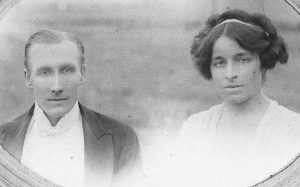
Figure 2. H. E. Olive and Ella (Schrader) Olive, likely 1912. Reproduced by kind permission of Mrs Rosalind Hughes, great grand-niece of Mr Olive.
Origin of the images
Many of the photographs underlying H. Enida Olive postcards seem to be unique to this company’s cards. Whether that means that they were taken by Olive himself is unknown. Reported exceptions include some Edmonton views that are also found on Stedman Bros. cards. For example, the “Looking N[orth] on 6th Street” card, reproduced above as Figure 1, is clearly based on the same photographic image that was used by Stedman Bros. Ltd. for its card 1301, “Looking North on Sixth Avenue”. Stedman did continue making postcards as late as 1914, however, so it is possible that the “borrowing” went in the opposite direction.
One large and important set of images used by Olive that were clearly not from his own photography were from the Peace River – Athabasca country of northern Alberta. In the Winter 1994 edition of Card Talk, Toronto Postcard Club member Jack McCuaig (TPC #790) wrote an article about an expedition led by Jim Cornwall, an Alberta MLA who in 1910 led a group of journalists, sportsmen, mineral experts and agriculturalists on a four week, 2,100-mile journey from Edmonton through the Peace River country, including places such as Dunvegan, Spirit River, Grande Prairie and Beaverlodge. McCuaig listed 21 members of the expedition, including a photographer named Clarence M. Burk, who operated a studio in Edmonton from around 1910 to 1921. McCuaig believed that photos taken by Burk were probably the ones used by H. Enida Olive for his northern view cards. McCuaig noted that some of the “Burk” photos were also published in L. V. Kelley, North With Peace River Jim, a book that told the tale of the expedition. To be clear, the attribution to Burk is based only on the fact that he appears to have been the only professional photographer on the expedition. But in any event they weren’t Olive’s, since they were taken before he came to Alberta.
From photos to postcards
The winter of 1911-12 was probably spent arranging for the photos (wherever obtained) to be printed as postcards, including in the form of souvenir booklets (a significant number of the postcards are tear-outs with one perforated edge – anyone with an intact booklet is asked to contact us). The numbering of the cards suggests that several hundred different views were printed, as discussed in more detail below.
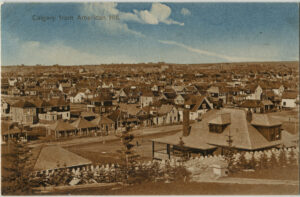
Figure 2A. “Calgary from American Hill.” H. Enida Olive postcard no. 167, with the company’s signature sepia + blue colour palette.
The H. Enida Olive postcards (possibly with a very small number of exceptions) were produced in Lübeck, Germany, by Nordische Kunstanstalt Ernst Schmidt & Co. Founded in 1908, the Ernst Schmidt company is not known to have focused on the export market, which helps to explain why, from a Canadian perspective, the H. Enida Olive postcards have such a unique appearance.*
*Many thanks to Helmfried Luers of The Postcard Album for identifying Ernst Schmidt as the printer.
Sales of the postcards probably began in January or February of 1912. There do not appear to be any postmarks prior to 1912 among Peel’s 200 examples and the earliest postmark among the Peel cards and those in the present author’s collection appears to be February 19, 1912. (Peel 10535 is said to be postmarked in August 1911 — this seems far too early and is likely a transcription error).
Tragedy strikes
As spring arrived in the year 1912, all was apparently going well. Olive arranged for his fiancée, Ella Madaline Schrader (1884-1977), to come out from England to join him in Canada. Rather than have her travel across the whole continent alone, Olive met Ella at Toronto on April 2, 1912, three days after she had arrived in North America (at Portland, Maine, aboard the Megantic). They were married the very same day and headed for Calgary, where the portrait in Figure 2, by George C. Cherer, was taken. As an additional sign of Olive’s confidence in Calgary’s future, he had also convinced his younger brother, Ernest Olive, to join him there — the intention being that Ernest would work for what would then become the “family business”. Rather than making the crossing on the Megantic with Ella, Ernest waited a couple of weeks and sailed on an even grander ship … the Titanic. An item in the Manitoba Free Press of April 26, 1912 recounted the sad news that the Olives soon received (Figure 3). The previous day, the Calgary Herald had noted that, in a letter written aboard the Titanic itself, young Ernest had expressed optimism about his “bright future” in Canada.
Ernest’s untimely death is the only obvious explanation of why H. Enida and Ella Olive would have so suddenly left Calgary and their new business behind. By the time the 1912 Calgary Henderson Directory appeared (with information that would likely have been gathered by mid-1912), the H. Enida Olive Co. was under the management of three men, William H. Dickie, Whitson C. Ridgway and Charles F. Fraser. There is no reference in the 1912 Directory to H. Enida Olive himself. All the same, it seems to have been business as usual at the company’s offices at 320-8 Av. W. Indeed, at that time, the H. Enida Olive Co. had (in addition to its new principals) at least three employees: a stenographer, a clerk and a traveller. Of particular interest to us, it was listed in the 1912 directory as a wholesale postcard dealer (see Figure 4). However, if this reflected a period of commercial success, it seems to have been short-lived. By 1913, the H. Enida Olive Co. had disappeared from the city directory and its three principals had either left town (Ridgway) or secured unrelated employment (Dickie and Fraser). Therefore, we can say with some confidence that the lifespan of the H. Enida Olive Co. was approximately mid-1911 to (at latest) early 1913 — less than two years, in any event.
Aftermath
There is not much to indicate what happened to the Olives after the terrible news about the Titanic reached them at Calgary. According to one document, on September 8, 1913, H. Enida Olive entered the U.S. from Vancouver, apparently bound for Los Angeles. Whether he was a resident of either place, as opposed to a visitor from England, is not clear. By 1919, Olive’s name appeared on the passenger manifest of the Adriatic, sailing from New York to Liverpool. He was recorded on that document as a resident of England as a “Director” — of what was not specified.
On May 9, 1920, at age 36, Harold Enida Olive died of tuberculosis at Northdown Hall, Margate, a seaside town in Kent. His death certificate states that he was acting managing director of a “rubber tyre co.” — perhaps his time in Singapore was related to the rubber industry of Malaya. Olive’s usual residence was identified on the death certificate as no. 12, Birchwood Avenue, Muswell Hill in London’s northern suburbs.
It is small wonder, given this biography, that Olive’s identity has been unclear to collectors of Alberta postcards. Although numerous, the H. Enida Olive Co. postcards represented only a short-lived business venture on the part of a man whose brief but busy life was primarily spent in England and the Far East. Even had Ernest Olive not had the bad luck to book passage on the Titanic, it is possible that the brothers would have moved on from the postcard business within a year or two anyway. In 1913, the booming Western Canadian economy began to slump and war was on the horizon. Moreover, postcard manufacturers and distributors across North America had been experiencing hard times for several years, as the mania for postcards wore off and the effects of the U.S. Payne-Aldrich Tariff Act of 1909 rippled through the industry.
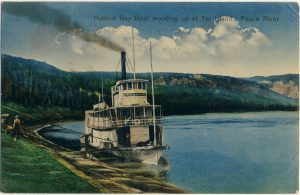
Figure 5. Showing the HBC sternwheeler Peace River, this beautiful H. Enida Olive postcard was posted September 23, 1912 at Watrous, Sask.
The Postcards
As can be confirmed by looking at the digitized versions of the 200+ H. Enida Olive images at the University of Alberta, most of the postcards have one of two distinctive colour palettes — either entirely sepia toned or sepia toned with an added blue sky, often with impressive-looking cumulus clouds as an extra touch. A smaller number, such as “Hudson Bay Boat wooding up at Tar Island. Peace River” (Figure 5) have a coloured (rather than sepia) foreground. The sepia image in Figure 6, “View on the Peace River” appears to have been taken just a few minutes prior to the coloured image in Figure 5.
That the postcards were produced in 1912 is evidenced by the fact that Edmonton’s High Level Bridge, which opened on June 2, 1913, is shown only in the early stages of construction (Figure 7), except (tellingly) in a few cards (e.g. Peel 6904, 6913 and 6918) that rely on an artist’s rendering to provide a “completed” view. The Alberta Legislature in Edmonton, also completed in 1913, is similarly shown by H. Enida Olive Co. as a drawing only. There is nothing in the H. Enida Olive postcards in the Peel collection, or that are known to the author from any other source, that is clearly inconsistent with the hypothesis that they were all published in the year 1912 from photos taken within the previous few years, with the exceptions of the Athabasca cards (as noted above) and a few others that may have been produced using stock images. One card, no. 23, depicts a “motor chemical squad car” of the Calgary Fire Department and is credited on the image to Progress Photo. Co.
The total number of H. Enida Olive postcards is difficult to say: perhaps 400-500 at most (not counting varieties of the same card). The vast majority are numbered between 1 and the low 200s (with some low numbers used more than once), or between 1000 and 1060. However, there is also a run of cards with numbers in the 300-329 range, a single known card in the 2000s (“2049”), several in the low 3000s, and even a card “10064”. It’s possible that there was an initial series of several hundred and then one or more special series whose numbering began as “1000”, “2000” or “3000”. Moreover, card 102 is the same as card 1043, although with a corrected caption (the first read “Looking N. E. from 14th & Victoria, Edmonten, Alta.” while the second corrected the spelling of “Edmonton” and made other minor changes) — and there are other such repetitions as well. While the back style is similar in all cases, there are many variants, as recorded by one of the TPC’s members, including multiple variants of many individual cards, suggesting multiple printings (which is surprising, given that the whole business had come and gone within 12-18 months).
Rick Parama’s H. Enida Olive Checklist (NEW)
We’re pleased to be able to share an extensive H. Enida Olive Postcard Checklist. The checklist was originally prepared by philatelist and deltiologist Rick Parama (TPC #1256) for his personal use. A native of Drumheller, Alta., Rick passed away in 2023, but we know he would be very pleased that his efforts are now being made available to other collectors. We hope they’ll continue his work by contributing additional information. Many HEO cards remain to be catalogued! For additional information, including an explanation of Rick’s back-type numbering system, please see his extensive Checklist Notes. (Please be aware that these notes are based on Rick’s work as of about 2020 and do not reflect significant subsequent additions to the Checklist by Andrew Cunningham (TPC #1424), e.g. insofar as those later additions might require corrections to Rick’s list of EKDs).
Please note that the checklist is not to be copied or used for any purpose, other than personal or academic research, without the express written permission of the Toronto Postcard Club. (Checklist added 24 August 2024)
NOTE: With respect to Albert J. Hill, the Calgary photographer who lived in the same rooming house as Olive in 1911, it can be noted that the University of Alberta’s Peel Prairie Provinces collection includes just a single postcard of his: a real photo that likely dates to about 1920. On the back of that postcard, Hill’s address is given as 233-8 Av. E., which was his business address from 1915 until approximately 1945. The fact that this postcard exists shows, for what little it might be worth, that Hill had at least some involvement in the postcard business within a few years of his acquaintanceship with Olive.
Please note that the information in this post is subject to revision as this company’s history is researched further. The original 2017 article was substantially revised in August 2022, thanks to comments and contributions from several members. More help with this is always welcome!

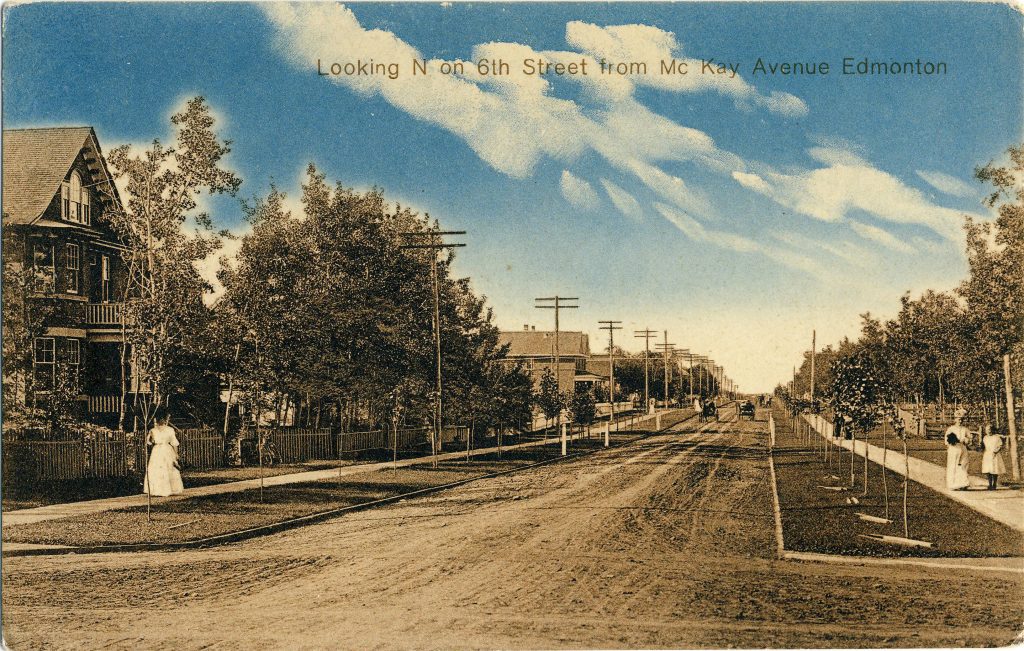
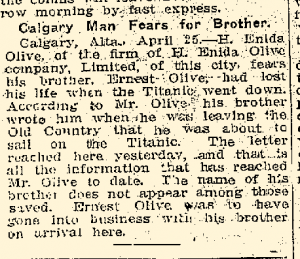
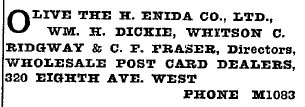
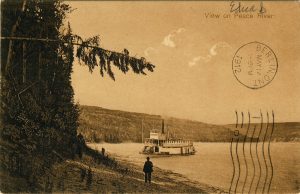

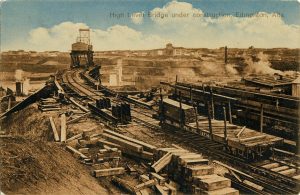
Byron Harmon Photographer and Postcard Publisher published Postcards overprinted on Enida Olives cards as well as having Enida Olive publish cards with his name only but using clearly the Enida Olive format. I have seen at least 52 cards in my Byron Harmon Collection.
I am working on a book to illustrate all the Byron Harmon Cards. I have about 325 pages so far. I have just scanned another 800 cards not in my collection.